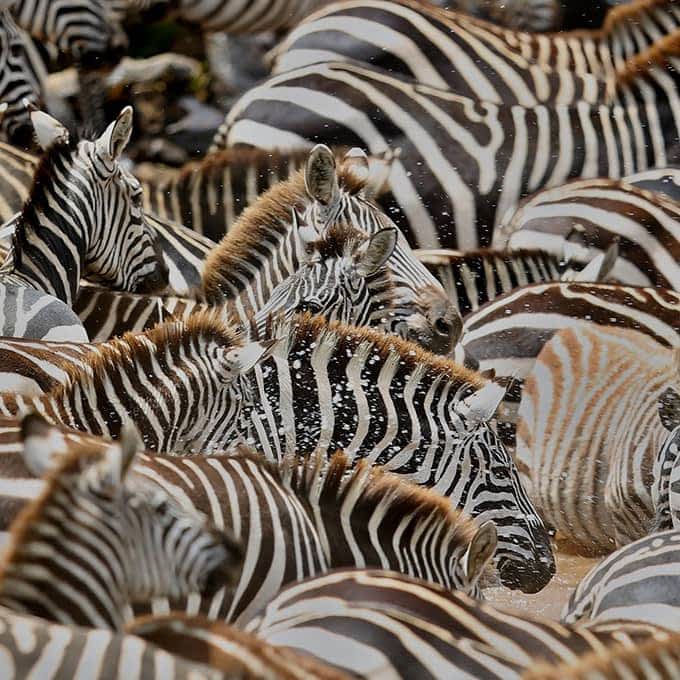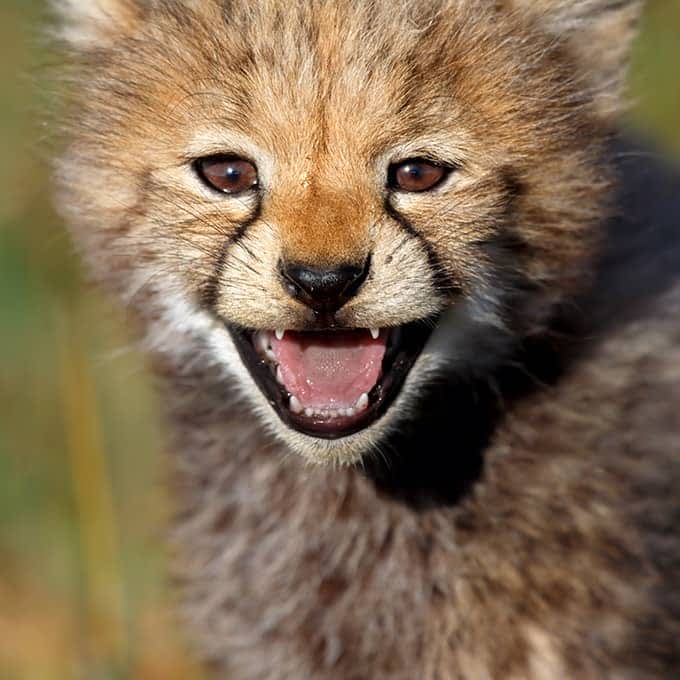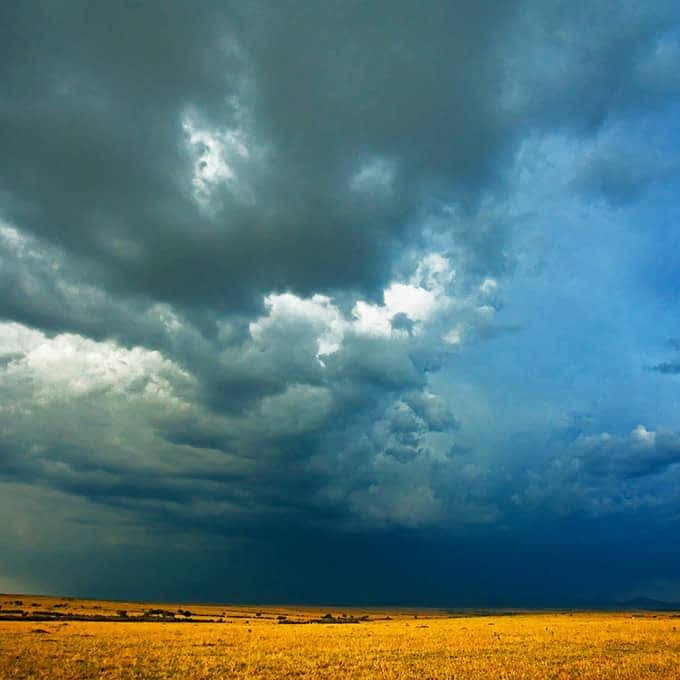Four different landscape types
The Masai Mara lies within the Great Rift Valley. This 5,600-kilometer fault line stretches from Ethopia’s Red Sea and on through Kenya, Malawi, Tanzania and Mozambique. The Mara offers visitors four very unique and beautiful types of terrain. To the east there are the Ngama Hills which feature leafy bushes and sandy soil, a favorite among rhinos. To the west there’s the Olooloo Escarpment, a towering sheer cliff rock wall. Along the Mara River lies the Mara Triangle with its lush grasslands and acacia filled woodlands, the home of a wide variety of wildlife among which the migrating wildebeest. Last, but not least, there’s the rolling grasslands scattered with boulders, termite mounds and an occasional bush, the Mara plains.
The Masai Mara plains
A large portion of the Masai Mara is made up of the most mind-blowing vast wide-open golden-hued grasslands. These are the kind of plains that seem to go on endlessly, without a human-built structure in sight. It’s the classic ‘savannah’ where you’ll have an excellent view of the animals that spend their time grazing, lazily strolling along or perched upon a termite hill staring out into the distance. This is also the best place for an excellent view of a few high speed and dramatic predator versus prey chases. The wide-open land gives you an excellent vantage point for spotting the animals of the Masai Mara plains.
The Mara’s riverine forests
Aside from the plains, the Masai Mara also features very unexpectedly green lush riverine forests. Large rivers, such as the Mara River, overflow their riverbanks during the rainy season. During the dry season, these areas remain a source of water for all the creatures in the Mara. The presence of water enables the growth of broad-leaved evergreen trees. The shade beneath the leafy greens allows the soil and air to remain moist. This creates the ideal habitat for other vegetation to flourish providing food for insects, birds and animals in the Mara. The forest floor is carpeted with shade-loving plants and even the trees are hosts to a multitude of orchids and creeping vines.
Loita Hills
Initially, you may be a bit underwhelmed when driving upon the Loita Hills. But, if you put in some effort (read: a few hours of bumpy driving) and patience you’ll eventually encounter a fairytale-like indigenous forest known as the 'Forest of the Lost Child'. At their highest, the Loita Hills reach an altitude of 2,150 metres. This low-lying mountain range to the northeast of the Masai Mara National Reserve is one of the most traditional corners of Masai country. It’s so remote and difficult to access that it is sparsely populated and receives very few visitors. It has therefore maintained a very authentic feel. The adventurous at heart can embark on walking safaris along the various trails that wind along the mountainside through dense jungle. The entire area is inhabited by a wide range of extraordinary animals; from buffaloes and bushbucks to forest pigs and colobus monkeys. The Loita Hills are also the scene of the lesser known 'little migration', where thousands of wildebeest (and the predators that hunt them) embark on their epic annual trek.
Masai Mara versus the Serengeti
Obviously, the most visible difference between the Masai Mara and the Serengeti is the size of the two famous safari destinations. The Serengeti is much larger of the two areas covering a total of 30,000 square kilometers. The Masai Mara spans 1510 square kilometers and is much smaller than its neighbour. However, beautiful things come in small packages. Even though the Mara ecosystem only makes up 0,01% of Africa’s total landmass, it’s home to over 40% of Africa’s large mammals. The further north you travel from the Serengeti towards the Masai Mara border, the more similar the landscape of the two regions (not that surprising). Of the two areas, the Masai Mara is greener and has a higher density of trees. The Mara is also known for having a more undulating, hilly landscape in comparison to its southern neighbour the Serengeti. Both the Masai Mara and the Serengeti have extensive river systems. One of these rivers, the Mara River, flows from the Masai Mara into the Serengeti. This river is the scene of dramatic river crossings by migrating wildebeest and zebras. The animals cross the Mara River countless times during the great migration.
Further reading








